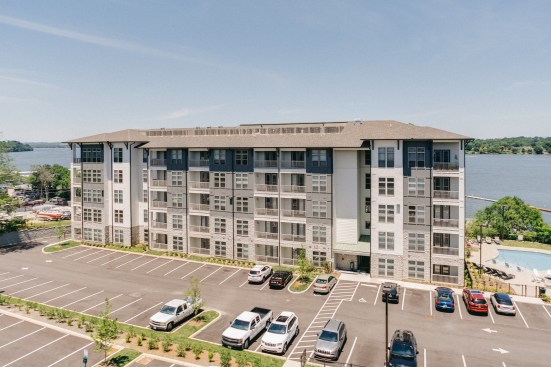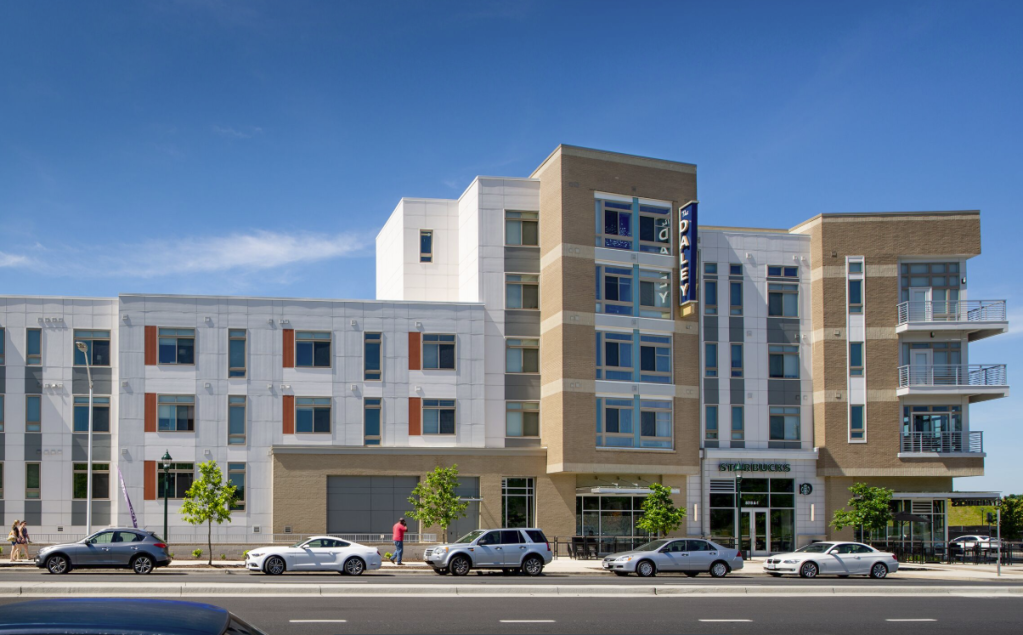
RKW Residential
Developed by Arnold Companies, the Residence at Old Hickory Lake in a suburb of Nashville features an eat/boat/live concept to promote the community’s location on the banks of Old Hickory Lake with neighboring marinas and a popular restaurant.
7. Include varied amenities. Amenities, which became associated with upscale urban multifamily buildings, are now almost de rigueur in suburban dwellings to attract a similar clientele. However, unlike many cities, surban sites often can turn natural features such as parks, lakes, and trails into amenities to convey the impression that the community isn’t just built around commercial uses but also has a heart, Luckino says. RKW Residential, a multifamily property management company headquartered in Charlotte, N.C., took this approach with an apartment building developed and owned by Arnold Companies in Columbia, S.C. The Residence at Old Hickory Lake in Old Hickory, Tenn., a Nashville suburb, features 116 units on the banks of Old Hickory Lake with the additional perks of a saltwater pool, grilling stations, and a fire pit, along with marinas and a popular restaurant that can be accessed from the water.
For sites farther out, more amenities can be incorporated to encourage residents to enjoy staying put. That was the approach Housing Trust Group, a multifamily residential developer based in Coconut Grove, Fla., took when it developed the first in its new Aviva brand in Mesa, Ariz. President and CEO Matthew Rieger packed the three-story, 325-unit apartment building with sizzle for its prime targets—young professionals coming to the area’s hot tech job market, and seniors giving up large homes. Among its features: a 150-foot-long pool, a 120-inch screen for movie nights, 10 outdoor fitness stations, a 9,000-square-foot clubhouse, and co-working spaces. Opened in late 2018, the property is 98% occupied and had the company’s fastest lease up despite having Mesa’s highest-priced rents: One-bedroom units start at $1,121 and go up to $1,799 for three bedrooms.
Another solution is to borrow from the urban playbook. Boston-area buildings are constructing decks atop rooftops, says architect Ed Hodges, with DiMella Shaffer, whose firm designed two such decks at the 40 Rugg Road building in Allston, Mass.
“When people tour buildings with roof decks that’s what they seem to remember. They find them cool because of views and height,” says firm partner Frank Valdes.
